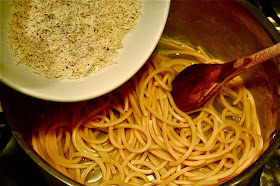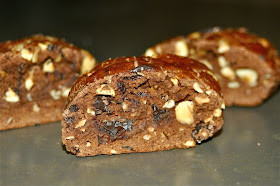Even serious wine geeks complain that the Italians make it hard to understand, let alone buy, their wines; it's just too confusing. Gambero Rosso Italian Wines can help. The annual guide rates around 20,000 Italian wines from a couple thousand or so producers. If you know somebody who loves Italian wine as much as I do then this would make a terrific — not to mention useful — gift.
Cardamaro is in the amari family of bittersweet liqueurs, Fernet Branca perhaps the best known. But this is a whole different thing. Cardamaro tastes more like vermouth than an amaro; in fact, I keep a bottle in the fridge and drink it as an aperitif. Fun fact: it's made from cardoons, hence the name. I really like this stuff. In case you can't find it locally, here's some info on shipping laws around the country.
Got a vegetable gardener on your list? How about a gift certificate (available in $25 increments) from Seeds from Italy. It's the only place I buy seeds anymore. They really are that good.
This is my chitarra. It's one of the oldest pasta-cutting tools ever made and, in my view, the best at making spaghetti and linguini. It's also a beautiful instrument (chitarra is the Italian word for guitar) that would make quite an impression as a gift. I got mine as a gift around fifteen years ago (Grazie Tom & Beth!), and it's one of my all-time favorites.
I've owned bread knives before, but none comes close to this one: the LamsonSharp 9-inch bread knife. If you do decide to gift it, make sure it's to somebody who can handle a knife. The thing is a real beast.
They used to call this "the everything pan" and that's exactly what it is. The All-Clad Saucier (3-quart) gets more use than any pot or pan around my house — and there are lots of them here, believe me. (My Associate insists that I mention it's the go-to pan for making risotto.) Every kitchen should have one.
This pan is around 30 years old — and I'd be lost without it. It's what I fry my meatballs in, assemble an untold number of pasta dishes, saute vast quantities of garlic and anchovy and escarole and broccoli rabe and... you get the idea. A lot of my life is in this thing. I haven't been able to find an exact replica but the Calphalon Nonstick Pan (14-inch) looks pretty close.
This is a big-ticket item, I'll admit. But how could I not include the thing I use to make Sunday Gravy? The Le Creuset Round French Oven (13.2 quart) will last a lifetime too.
Merry Christmas everybody!


















































